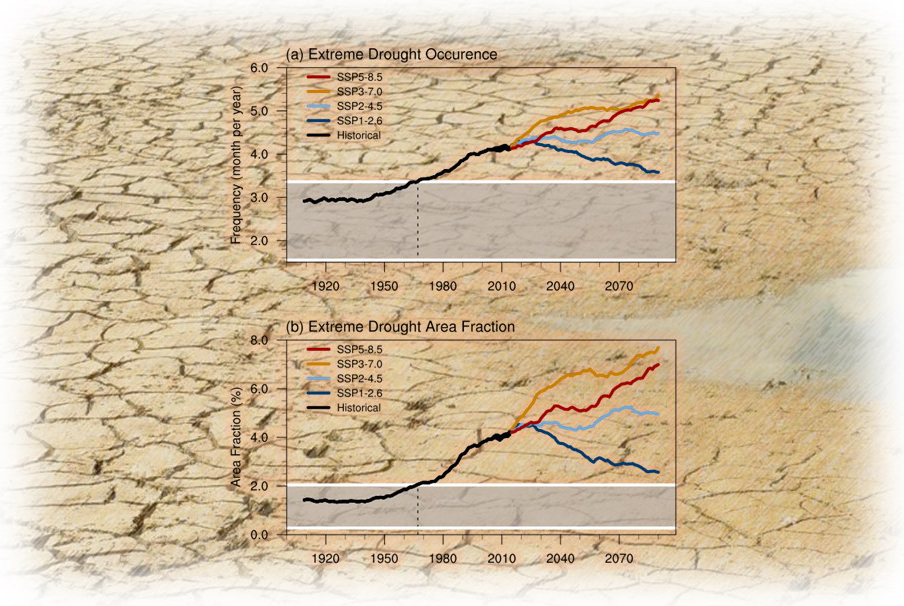Southeast Asian monsoon region falls in the warm and humid tropics modulated by Asian monsoon. It is home to nearly 15% of the world’s tropical forests and 8.5% population in 3% earth's total land area, and also one of the biodiversity hotspots in the world. With the unprecedented urbanization and population growing rate, water scarcity issues have already posed a serious challenge for sustainable development in Southeast Asian monsoon region. Drought has affected over 66 million people in Southeast Asian countries for the past 30 decades.
The 2020 drought started from 2019 has caused water levels in Southeast Asia's Mekong River to drop to its lowest in more than 100 years. The 2020 drought also spread to Southwest China, the upstream of Mekong River, and over one million people were lack of accessing drinking water. Although the role of direct impact of human by building dams and diverting water from rivers is blamed, the impact of anthropogenic forcing—such as greenhouse gases and anthropogenic aerosols—on extreme drought events in the region is still unclear.
Scientists from the Institute of Atmospheric Physics (IAP) of the Chinese Academy of Sciences investigated the observed drought changes over Southeast Asian monsoon region and impacts of anthropogenic forcing using the Coupled Model Intercomparison Project phase 6 (CMIP6) models. Their findings were published in
Geophysical Research Letters recently.
Changes in extreme drought (a) occurrence (month year-1) and (b) affected area fraction (%) over the Southeast Asian monsoon region. Gray shadings denote the range of internal variability, and black vertical dash lines are the time of emergence (TOE). (Image by ZHANG Lixia)
They revealed an increasing drought risk for 1951-2018 due to more frequent and wide-spread droughts over the Southeast Asian monsoon region. The influence of anthropogenic forcing is detected, which has increased the likelihood of the extreme droughts in historical simulation by reducing precipitation and enhancing evapotranspiration. The time of emergence (ToE) of anthropogenic forcing in extreme drought frequency and affected area firstly appeared around the 1960s. Even though drought risk will start to decrease since the 2030s in the future under the lowest emission scenario of CMIP6, the projected drought risks are still beyond natural only forced changes.
"The impact of anthropogenic forcing on drought risk over Southeast Asia has already exceeded internal climate variability in the late 20th. It is urgent to take actions to reduce anthropogenic aerosol loading and greenhouses gases emissions to reduce the Southeast Asian drought risks." Said Dr. ZHANG Lixia, the lead author of the study.
Citation: Zhang L., Z. Chen, and T. Zhou, 2021: Human Influence on the Increasing Drought Risk Over Southeast Asian Monsoon Region, Geophys. Res. Lett., 48, e2021GL093777. doi.org/10.1029/2021GL093777. https://agupubs.onlinelibrary.wiley.com/doi/10.1029/2021GL093777?af=R
Media contact: Ms. LIN Zheng, jennylin@mail.iap.ac.cn

